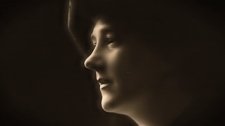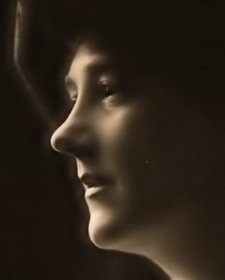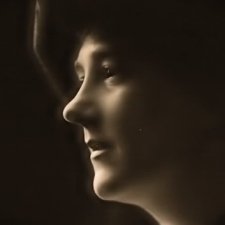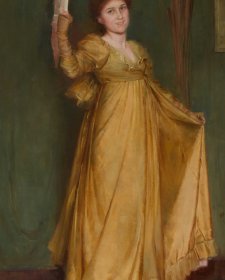In the first part I ever played, I wore a crinoline, and I had five lines and a laugh. A laugh is considered hard but I found I got on beautifully with it, and I have been laughing ever since. I always like to have a play with plenty of laughs in it. I love comedy. It is the first laugh that people think is hard but after that, once you learn to laugh on stage, it’s no trouble.
I was only a little girl then – I wasn’t fourteen. I used to go behind the scenes of the theatre in Sydney and I’d take tea with Fanny Brough, and there I became stagestruck. I was very anxious to go on the stage and my family did not wish me to, but after a great deal of persuading my father consented to let me try it once. He thought that after one experience, I would be tired of it. I went on in the company of Brough and Dion Boucicault, the younger. In one of the lines of my part I had to pick up the cassock of a clergyman and ask with a laugh: ‘What’s this, darling?’
Then we went to Melbourne and they were afraid people would take offence at those words. I’m sure I couldn’t see anything wrong about them. They cut them out and it nearly broke my heart. But that was my first experience in having lines cut. It is a great trouble to have lines cut out and scenes transposed after you have once learned them.
I was a particularly ugly child at that time. My father used to say that I would never get on with such an ugly face and squeaky voice. I think that was one reason he didn’t want me to go on the stage in the first place. I used to have essays and books sent me by the people in front, saying they had seen my performance and were sorry that I didn’t know how to manage my voice. Oh, the people of Australia are delightful. They were awfully sweet and kind to me. I love every gum tree and every stone in Australia. No one would have any trouble in getting along on the stage there, if he had any talent at all, for people appreciate it. You go entirely on your merits in Australia.
(Interview in the New York Times, February 18, 1900)













